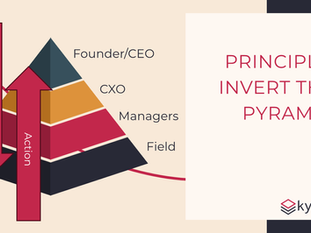
Note: this is was originally published in 2017, so please forgive the dated examples.

One of the challenges of working in the IT industry is the rise and fall of buzzwords. During the rise, everyone wants to get on the bandwagon. Even companies that don’t have anything to do with the buzzword will want in, so they’ll find something to link them to it. Mind you, buzzwords are not trends. Trends represent where technology is headed; actual, concrete products or technologies that affect our lives. Buzzwords are concepts or technology practice words that everyone gets excited about.
For example, the Internet of Things, artificial intelligence, and blockchain, are examples of technology trends. Even though there’s hype surrounding them, and some of the definitions here aren’t clear (with Internet of Things leading the pack in ambiguity), trends tend to refer to actual things. Buzzwords, on the other hand, refer to concepts that become popular because they’re new, or have been accused of transforming a company, or are related to successful companies, etc. In the context of this article, buzzwords are words that don’t refer to physical things, carry definitions that are seldom clear, and they tend to be used incorrectly/out of context on a regular basis. More recent buzzwords I’m hearing would include disruption, digital transformation, agile, and others.
I am not a fan of buzzwords.
There are several reasons I don’t like them. First, using words that are not well-defined removes accountability from a conversation. I can say whatever I want if what I’m referring to exists clearly only in my head. Second, reducing complex concepts to soundbites (or single words, in this case), creates the inaccurate impression that they’re a simple thing we should all be doing. If it is something worth talking about, considering, or evaluating; if it’s taken a place in our consciousness, it can’t simply be a one-word concept. Third, and I think is the most important reason, some these buzzwords are being used to build corporate strategies.
While there is no way to remove these words from the general consciousness, we can perhaps ground the more common ones in realistic definitions and applications. In this article I want to talk about my favorite buzzword.
Disruption.
In the last decade or so, I don’t think any conference, talk, blog, or article that talks about technology in any way has not used the word disruption. It’s been applied to everything from TVs to cleaning products. At the rate the word is used, we will all be immortal cyborgs living on a space station orbiting the nearest star in 6-9 months. We obviously will not – so what gives? I think it helps to look at three angles: first, what is disruption, second, what is not disruption, and third, why its overuse.
First, what is disruption? The word was first used in the business sense in a 1995 HBR article where the Joseph Bower and Clayton Christensen introduced the concept, which I’ll clumsily summarize here (there really is no alternative to reading the article and the more recent follow-up entries). The authors noticed something interesting: the more market leaders focused on their customers, the less innovative and more susceptible to losing their market leadership they became. The authors contended that it is this focus on existing customers that makes it impossible for companies to make business model innovations that rely on the current customer base, because said innovations would, by definition, eat into their current value networks. This creates a niche of unserved customer needs that only other (often less established) players to target that niche by introducing an innovation or technology that overturns current business models – disrupting them. Disruption in the original sense is a novel approach to serving value that makes current business models insufficient, and by definition, making them less valuable. A key point here: new technology isn't necessary for disruptive approaches; it's the business model and customer base that defines disruption.
So, what is disruption not? Disruption is not innovation; at least, not only innovation. Incremental improvements to products and technologies can’t be disruptions. A company that makes a new version of an existing product can’t be considered disrupting, if the new product serves the same set of customers in the same way. In fact, a company coming up with a truly disruptive productive is committing suicide, since it’s killing its current revenue stream. See, disruptive technologies will start out small and slow, (which is why they are almost always ignored by the big players), and slowly gain relevance. That means that a company running blindly into self-disruption will run into trouble.
Before I turn to third angle, perhaps it’ll be illustrative to introduce some examples. A textbook example of disruptive technology in the last decade is the iPhone. At the time of its launch, Nokia was the world leader in mobile phones, cranking out devices that got incremental improvements every few months. They weren’t exactly dumb phones, but they weren’t groundbreaking. The iPhone, on the other hand, was a computer first and a phone second. It had apps, it had an app store, it had a large display, and a responsive touch screen. What it didn’t have: copy-paste, Bluetooth, MMS, and a friggin’ keyboard. Hardcore Nokia & Blackberry fans rolled their eyes in Apple’s general direction and continued tapping away at the physical keyboards (myself included). What’s interesting is that Apple didn’t introduce any new technology here, they just recombined existing elements into a new experience that made the escalation of features in other phones irrelevant.
Now to third angle: if disruption is so well-defined, why its casual overuse? The small reason is the definition is not clear in everyone’s minds. The big reason, however, is that disruptive technologies have made their inventors a lot of money. Every company wants to be seen to have the potential to introduce the next big thing; disruption has become aspirational. Unfortunately, just because you call something disruptive, it doesn’t make it true. In fact, when I hear that word used to describe a product launch, I’m immediately ready to hear an incremental enhancement, not true disruption. Again by definition, a company cannot self-disrupt, though it can create disruptive divisions.
One final note on the word’s overuse: even if applied with good intentions, the word’s very definition makes it difficult to apply to the immediate present. If we return to the definition, it points to a niche customer base that’s not served by the current value network, and that it starts small, under the radar of established players. The definition doesn’t guarantee a disruptive product (not every niche customer base will become disruptive); it’s almost impossible to tell with certainty that a product will be disruptive, even it ticks all the boxes. One can say that a product is disruptive only after the disruption has happened.






